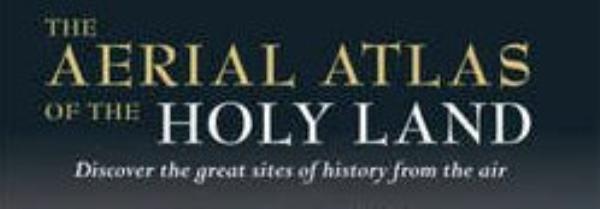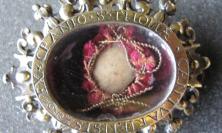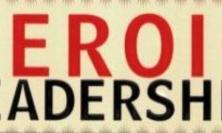It is hard to define or articulate the Holy Land sensation. It is more than 20 years since I visited the region, and at the time I could find only one word that seemed to sum it up: electricity. It was like static that makes you tingle – a charge that is emitted from everything you see or touch. It is a very sensual experience too, rich in smells, sights and exotic tastes.
But so many other elements come into play. While my visits to the Holy Land took place at a time of relative calm, a tense undercurrent was never far away. Questions abound during any trip to this region: whether to travel from north to south through Samaria or along the Jordan? How much freedom might we have to roam around Bethlehem? How tight is security going to be at the Western Wall of the Temple and the Temple Mount? The fact that this area of the Mediterranean has been the focus for military campaigns, bloodshed, wars and battles for thousands of years – a state of affairs that continues, of course, today – can never be ignored.
There is a point at the heart of the Old City of Jerusalem where David Street and the Shuks intercept. To the west is the Christian and Armenian Quarter; to the north east, the Arab Quarter; and – looking pristine in all its sandstone glory – the streets, houses and businesses of the Jewish Quarter fill the north-western section. Each time I went there, I had a strange sensation. It felt like the point of interception of the three great monotheistic faiths. And historically, that was precisely how Jerusalem and the Holy Land were regarded: the heart of the known world, the meeting point of cultures and civilisations, of trade and traditions, of faith and fables.
There is of course one other element of the Holy Land that it is impossible to ignore: its breathtaking scenery. It is not just the Land of the Book, it is also the land of the mountains and the valleys, the rivers and the lakes, the deserts and the ruins. Millennia of history, of construction and destruction, are combined with views unparalleled in the world, whether around the Sea of Galilee or the Jordan Valley, the Dead Sea or the Mediterranean Plain. Add to these natural wonders the contributions made to the landscape by scores of civilisations: monasteries growing out of rocky outcrops; a grotto honouring a Greek god; synagogues, tombs, fortresses and amphitheatres, many of them now ruins, yet still bearing witness to countless generations of prayer, life, struggles and triumphs.
Can any one book adequately encapsulate all of this? Yes – although the ‘one book’ in question is, in effect, several books. My hopes were high yet my expectations modest when I received a copy of The Aerial Atlas of the Holy Land. I expected lots of glossy photographs taken (naturally) from above: glorious landscapes and spectacular views. The publishers have certainly delivered that in the Aerial Atlas, whether it is the old desert road between Jerusalem and Jericho or the River Jordan cutting its way through the terrain, the Arbel Pass in Galilee or the deep blue waters of the Mediterranean. The principal photographer is Sonia Halliday, who specialises in aerial photography in the near and Middle East. (For those interested in the technical aspects of her work, she used two Pentax 6x7 cameras with 135mm, 200mm and 300mm lenses on Fujichrome Provia 100F for the photos in this volume.) She worked in partnership with wildlife and archaeological photographer, Bryan Knox. Between them, they have captured in a quite spectacular way the starkness and the richness of the terrain. Visually, without a doubt, The Aerial Atlas of the Holy Land is an ideal coffee-table book.
But it is far, far more than that. Author John Bowker, a professor of religious studies and an expert in world religions, has successfully combined history with theology and scripture studies with contemporary issues. His sources and his knowledge seem vast as he explores rabbinical writings and architectural styles, alongside more conventional materials such as historical records and great works of literature.
The introduction in itself is a comprehensive and easily digestible potted history of the region, taking the reader through various periods. It puts the books and themes of the Bible in their context, provides a route map through the Old Testament, and addresses the rise of Christianity, the Jewish Revolt and the arrival of the Muslims. It does not deal with anything beyond the Crusades, except in passing. It also provides clear maps, plans and historical illustrations, making it a good source of reference for students of Middle Eastern history or biblical studies.
But it is when it moves into the main body of text (alongside stunning photos) that this book really comes into its own. Divided into three sections – The River Jordan, The Hill Country and The Coastal Plain – it is a travelogue and a guide book, through time, the Bible and the country. Generally, it works through the country geographically, town by town, landmark by landmark. But in each section, there is a bonus: special features on Monasteries, Synagogues and The Crusades.
The Aerial Atlas of the Holy Land works on so many different levels. It is beautiful just to look through, admiring the scenery and wondering at the ruins and the history they relate to. It is a rich source of information about the region and its peoples (albeit with a Judaeo-Christian emphasis); and with a comprehensive index and bibliography for further reading, it need not stop there. But most of all, whether you have yet to visit the Holy Land or long to return one day (as I do), it makes a bold statement about this region, for a whole host of reasons. We know now that physically it is not the centre of the world, but John Bowker’s writing and Sonia Halliday and Bryan Knox’s photographs certainly help the reader to understand why it was once thought to be, and why it remains today a cause of tension and hostility, as well as a wellspring of faith.
The reviewer, Ged Clapson, is Communications Officer for the British Province of the Society of Jesus.
![]() Find this book on Mitchell Beazley's web site
Find this book on Mitchell Beazley's web site






